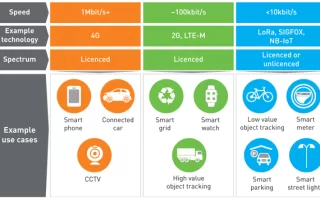Businesses today are constantly looking for ways to stay competitive in today’s fast-paced, ever-evolving business landscape. One effective way they do this is by embracing sustaining technologies. But what exactly are these technologies, and how can they help businesses maintain their market share? We explore the definition, characteristics, examples, case studies, and challenges surrounding sustaining technologies.
Definition of sustaining technology
Sustaining technology refers to the type of innovation that aims to improve existing products or services within an established market. It focuses on incremental enhancements, fine-tuning features, and optimizing performance rather than introducing groundbreaking changes. One key characteristic of sustaining technologies is their ability to build upon a company’s existing knowledge base and infrastructure. They leverage current resources and expertise to make gradual improvements that meet customer needs while maintaining compatibility with previous versions. These improvements can take various forms, such as enhanced functionality, increased efficiency, improved design, or better cost-effectiveness. Sustaining technologies aim to provide customers with added value without disrupting their current usage patterns or requiring significant adaptation.
Characteristics of a sustaining technology
Here are some key characteristics that make sustaining technologies unique:
- Incremental Improvements: Sustaining technologies focus on making gradual enhancements to existing products or processes. This approach allows companies to meet customer demands for improved performance, features, or efficiency without disrupting established markets.
- Market Stability: Unlike disruptive technologies that often create new markets and change the competitive landscape, sustaining technologies aim to maintain market stability by catering to the needs of existing customers. They provide predictable advancements that align with consumer expectations.
- Continuous Development: Sustaining technologies require ongoing investments in research and development (R&D) to stay relevant in an ever-evolving marketplace. Companies must continuously innovate and refine their offerings to keep pace with changing customer preferences.
- Customer Feedback-driven: Successful implementation of sustaining technologies relies heavily on gathering feedback from customers about their pain points and desires for improvement. By incorporating this feedback into product development cycles, companies can deliver solutions that directly address customer needs.
- Competitive Advantage Maintenance: Adopting sustaining technologies enables organizations to retain their competitive edge by staying ahead of competitors’ innovations while keeping loyal customers satisfied with incremental improvements over time.
Examples of sustaining technologies
Sustaining technologies are innovations that improve upon existing products or services, allowing companies to maintain their market share. These technologies may not be groundbreaking or disruptive, but they play a crucial role in the continuous growth and evolution of businesses. One example of a sustaining technology is the regular updates and improvements made to smartphones. Companies like Apple and Samsung constantly release new models with enhanced features such as improved cameras, faster processors, and longer battery life. These incremental advancements keep customers engaged and loyal while ensuring that the company remains competitive in a saturated market.
How companies use sustaining technologies to maintain market share
One effective way they achieve this is by leveraging sustaining technologies. These are innovations that help improve existing products or services, providing incremental value and ensuring customer loyalty. One example of how companies use sustaining technologies is through continuous product enhancements. By gathering feedback from customers and analyzing market trends, companies can identify areas for improvement or new features that will make their offerings more appealing to consumers. This could involve upgrading software systems, adding new functionalities, or enhancing the design of a physical product. Companies also utilize sustaining technologies to optimize operations and increase efficiency.
Case studies: successful use of sustaining technologies in different industries
Case studies offer valuable insights into how different industries have successfully used sustaining technologies to maintain their market share.
- The automotive industry: One notable case study is the introduction of hybrid and electric vehicles by companies like Tesla and Toyota. These sustainable alternatives to traditional gasoline-powered cars allowed these companies to stay ahead in an increasingly environmentally conscious market.
- The smartphone industry: Apple’s iPhone series serves as a prime example of leveraging sustaining technology effectively. By continuously improving features such as camera quality, processing power, and user experience, Apple has managed to retain its loyal customer base while attracting new users.
- The retail industry: Amazon’s use of data analytics and AI technologies has revolutionized online shopping experiences for customers worldwide. By constantly refining its recommendation algorithms and supply chain management systems, Amazon remains at the forefront of e-commerce.
- The healthcare industry: Pharmaceutical companies often develop sustaining technologies through the creation of improved drug formulations or medical devices that enhance patient outcomes or simplify treatment procedures.
Challenges and limitations of relying on sustaining technologies
Here are some factors to consider:
- Limited innovation: Sustaining technologies focus on improving existing products or services rather than introducing groundbreaking innovations. This approach may limit a company’s ability to stay ahead of the competition and adapt to rapidly changing customer needs.
- Market saturation: Over time, sustained improvements in a particular technology can lead to market saturation. As more companies adopt similar strategies, it becomes increasingly difficult to differentiate products or services from competitors, leading to intense price competition.
- Disruption risk: While focusing on incremental improvements, companies may need to pay more attention to disruptive technologies that have the potential to transform industries completely. Failure to recognize and invest in these disruptive innovations could leave businesses vulnerable when new players enter the market with game-changing solutions.
- Customer fatigue: Continuous upgrades and improvements may eventually reach a point where customers no longer see value in them or become fatigued by constant changes. This could result in diminished customer loyalty and increased churn rates if customers feel overwhelmed or dissatisfied with frequent updates.
- Resource allocation: Relying solely on sustaining technologies might divert resources away from exploring new opportunities or investing in research and development for future growth areas. Companies need to strike a balance between optimizing existing offerings while also allocating resources for long-term innovation.





